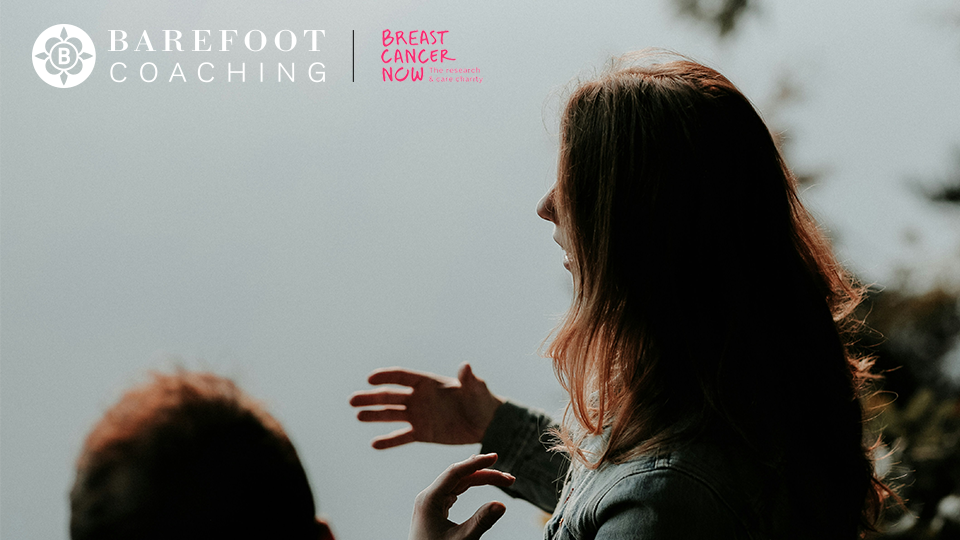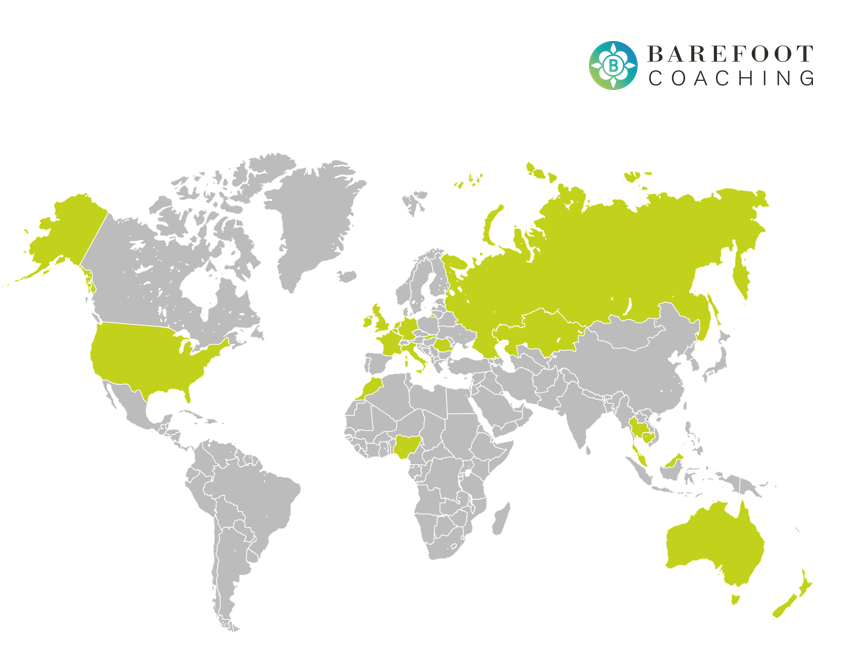

Earlier this year, the International Coaching Federation published the findings from their 2023 Global Coaching Study. In this article, Barefoot’s Managing Director Andy Chandler PCC shares his reflections on what makes for encouraging reading for the global coaching community.
The long-awaited International Coaching Federation’s (ICF) Global Coaching Study 2023 is here. It takes a global perspective gained from over 14,000 respondents across 157 countries – so it’s got significant scale that’s for sure. The ICF have been putting similar surveys out since 2012 with the previous report published in 2020 (just before you know what).
Want a quick hit? You can download a free-to-view executive summary below:
Alternatively, if you want to get into the nitty gritty you can part with some cash ($95 USD for ICF members & $295 USD for non-members) and get the full 90-page report. Alternatively, just keep reading this brief article.
Barefoot Coaching has read and reflected on the whole report and want to share what has caught our attention. At this point there is a small health warning: whilst the overall response rates are significant, they are skewed towards ICF members. It’s not a problem, but it does mean that coaches who are accredited elsewhere are far less represented. The report is clear about how it has statistically adjusted for this.
“The big story is one of growth, growth and more growth”
The big story is one of growth, growth and more growth. The estimated annual revenue from coaching is $4.6 billion USD – a whopping increase of 60% since 2019.
According to the survey there is an estimated global population of 109,200 coach practitioners, a staggering 54% increase on the number in 2019. Whilst that might seem like a big number, remember that this is an estimate across the entire globe. Come to think of it, there are a reported 1.7 million coaches on LinkedIn alone, so here lies the first challenge for the industry. Coaching is an unregulated industry, anyone can call themselves a coach, and many of them do!
We think it’s great to see that 85% of coach practitioners who completed the survey hold a certification/credential from a coaching organisation. We are very proud that over the years, many of the 5,000 trained coaches who have trained with Barefoot will be part of this number of credentialed coaches!

Incidentally, the ICF isn’t the only international coaching association – with many respondents saying they had membership across other organisations including the Association for Coaching, and European Mentoring and Coaching Council to name but two of a long list. Barefoot’s coach training programme holds a Level 2 accreditation from the ICF and our Team Coaching Practitioner Programme is accredited by the EMCC (just thought we’d slip that in there).
Even better, there has been a marked increase in the number of coaches holding a credential/certification since the last survey. Chances are you may have picked up recent reports about the proliferation of untrained, unskilled, inexperienced life coaches. Sadly we suspect these stories will become even more commonplace – so we’re holding the line when we say: accreditation and credentialing really matter. We recently created a video explaining more about what these terms actually mean:
One of the most common questions we get when people are considering becoming a coach is about potential earnings. According to the survey, the average annual revenue from coaching is reported as $52,800 USD per person, up 12% since 2019. This is self-reported and you might hear the voices of statistics teachers saying ‘beware the average’ – even by the ICF’s own admission, the range in self-reported earnings is pretty significant.
“Demand for coaching continues to grow at pace”
The big watch-out here is that this is only the estimated income from coaching activities, with 93% of practitioners offering services in addition to coaching such as consulting and training. It’s worth reflecting on this point: even established coaches benefit from broadening their offering and portfolio of services – whether that’s for economic benefit or frankly personal and professional interest!
Sticking with all things financial, the average hourly rate charged to a client for coaching is estimated to be $244 USD which has grown by 9% since 2019 but there is huge variation driven by geographies, types of clients and coach practitioner characteristics.

So, it’s worth pausing for a second and just considering what this all means. Despite the fact that there are more coaches in the market since 2019 (+54%) the average revenue per coach has continued to increase (+12%) and overall global estimated income has grown by 60%. In other markets, you might expect to see a significant dilution in earnings with increased capacity – but these numbers suggest that demand for coaching continues to grow at pace. In essence, the more coaches there are, the more work there is for coaches! Many people already know that not only do Barefoot Coaching train people to become coaches, but we also provide coaching to individuals and organisations. This growth in demand is something we have absolutely seen coming through strongly.
“Two-thirds of coaches with less than a year of experience are actively coaching paying clients”
The vast majority of coaches were active when they completed the survey. This simply means that they had a paying client at the time. In fact, on average, coaches had just over 12 active clients each. If you’re thinking about whether or not you can start your coaching business with relatively little experience, and you delve into the report deeply enough, you’ll see that almost two-thirds of coaches with less than a year of experience are actively coaching paying clients and that this jumps significantly in the second year as a coach.
We’ve been training people to become coaches and use coaching skills for over 25 years. We are strong advocates for the power of coaching to affect the lives of many. Overall we love the story of growth and optimism in this recent survey and remain completely committed to seeing further growth go hand in hand with the highest professional standards of teaching and coaching.
We’d love to hear your thoughts and reflections, so please do get in touch.
"*" indicates required fields

Barefoot Coaching Ltd. Address: Unit 6E Boundary Court, Willow Farm Business Park, Castle Donington, Derbyshire, DE74 2NN
Registered in England and Wales No. 06932330. All content is the sole ownership of Barefoot Coaching Ltd. 2023.
Website by Saint Associates.
| Cookie | Duration | Description |
|---|---|---|
| cookielawinfo-checkbox-analytics | 11 months | This cookie is set by GDPR Cookie Consent plugin. The cookie is used to store the user consent for the cookies in the category "Analytics". |
| cookielawinfo-checkbox-functional | 11 months | The cookie is set by GDPR cookie consent to record the user consent for the cookies in the category "Functional". |
| cookielawinfo-checkbox-necessary | 11 months | This cookie is set by GDPR Cookie Consent plugin. The cookies is used to store the user consent for the cookies in the category "Necessary". |
| cookielawinfo-checkbox-others | 11 months | This cookie is set by GDPR Cookie Consent plugin. The cookie is used to store the user consent for the cookies in the category "Other. |
| cookielawinfo-checkbox-performance | 11 months | This cookie is set by GDPR Cookie Consent plugin. The cookie is used to store the user consent for the cookies in the category "Performance". |
| viewed_cookie_policy | 11 months | The cookie is set by the GDPR Cookie Consent plugin and is used to store whether or not user has consented to the use of cookies. It does not store any personal data. |